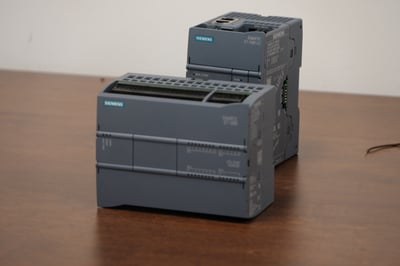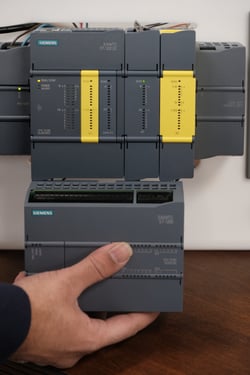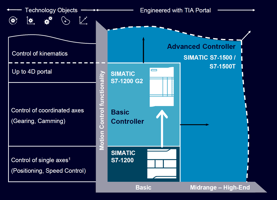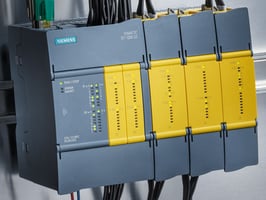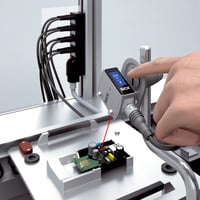Siemens has revolutionized its automation offering with the new SIMATIC S7-1200 G2 controller,...
SIMATIC S7-1200 G1 vs G2: What a Decade of Innovation Brings to Automation
.png?width=400&height=200&name=Untitled%20design%20(49).png)
After ten years of the original S7-1200 serving as Siemens' workhorse controller, the newly announced G2 series represents a fundamental rethinking of what a PLC can be. Let's examine exactly what's changed between generations.
Processing Speed: Cutting Response Time in Half
The G1 offers 85ns bit performance, the G2 slashes this to 40ns - less than half the processing time. This isn't just a specification improvement; it enables much faster scan times and quicker system responses that were impossible with the G1.
Memory: Breaking Past Previous Limitations
The memory constraints of the G1 series often required careful program optimization, with the CPU 1212C limited to 100kB program memory and the CPU 1214C to 150kB. The G2 dramatically expands these boundaries. The new CPU 1212C G2 now provides 150kB program and 500kB data memory, while the CPU 1214C G2 offers 250kB program and 750kB data memory. This expansion opens new possibilities for more sophisticated applications that weren't as feasible with the G1's memory constraints.
Physical Design: More Capability in Less Space
The G2 manages to pack more features into an even smaller footprint. The CPU 1212C shrinks from 90mm to 70mm, while the CPU 1214C reduces from 110mm to 80mm. The G2 also introduces a new high-density terminal block design with push-in wiring, addressing one of the G1's limitations in installation flexibility.
Motion Control: A New Level of Sophistication
The G1 offered basic motion control capabilities, but the G2 brings features previously reserved for advanced controllers. Where G1 focused on single-axis control, G2 adds coordinated multi-axis control and kinematics. This advancement enables sophisticated motion sequences that would have required a more advanced controller in the G1 era.
Network Communication: Ready for Modern Industry
The G2 supports up to 31 PROFINET devices and PROFINET IRT capability for synchronized control. Perhaps most significantly, the G2 introduces NFC functionality - completely absent from G1 - enabling wireless access to diagnostics and configuration.
Safety Integration: Maximum Protection with Minimum Complexity
The S7-1200 G2's approach to safety integration marks a significant advance over its predecessor, introducing fail-safe signal boards that mount directly on the CPU for safety applications up to PL e / SIL 3, while supporting flexible expansion through fail-safe signal modules and mixed I/O modules. The engineering experience has been streamlined by fully integrating safety programming into STEP 7 within TIA Portal, with ready-to-use certified program blocks available in the LSafe library. Multiple safety operating modes ensure machine productivity isn't compromised by safety implementation, while the optimized hardware portfolio allows precise matching of safety hardware to application requirements.
High-Speed I/O: More Precise Control
The G2 increases the number of high-speed counter channels from 6 to 8, enabling more precise motion and position control applications. This improvement provides greater flexibility in applications requiring precise timing and position monitoring.
When the S7-1200 was introduced, it set the standard for automation controllers. Now, the G2 series raises that standard significantly, bringing capabilities that were previously only found in higher-end controllers down to the standard automation level. Available now, the G2 series doesn't just iterate on the original design - it fundamentally advances what's possible in automation.
For users of the original S7-1200, the G2 offers a clear upgrade path that maintains programming compatibility while delivering substantial improvements in every key performance metric. For new installations, it provides capabilities that simply weren't possible with controllers before.
Want to learn more about the S7-1200 G1 vs G2? Watch our video here!
